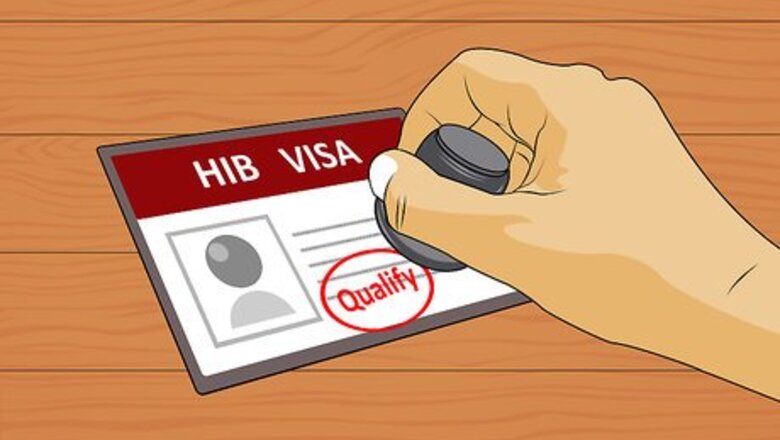
views
X
Research source
Getting an H-1B Visa
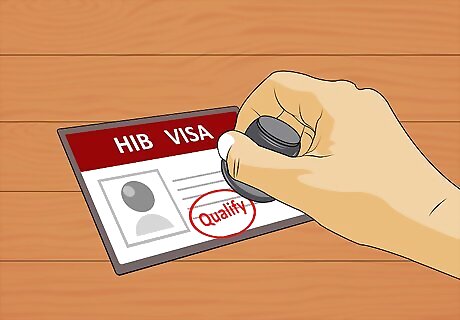
Qualify for an H-1B visa. This type of visa is much sought after as it can be issued for full time or part time employment for individuals who possess a “specialty occupation”. A specialty occupation is a role that requires the skills of a professional. You should have at least a bachelor’s degree or its equivalent, or relevant work experience. In addition, the process can be complicated and you may need an attorney to navigate the process. Accountants, computer analysts, web programmers, web designers, and engineers can all quality for an H-1B visa. U.S. Congress allots 65,000 H-1B visas a year for specialty professionals who receive job offers from U.S. companies or organizations. There are also 20,000 H-1B visas for individuals with advanced degrees, such as M.D., J.D., MBA, and Ph.D. If you are a Canadian with a medical degree, a law degree, or another graduate degree, you may be eligible for one of the 20,000 H-1B visas. This gives you a leg up, as you will not be put into the general pool of applicants, competing for one of 65,000 visas. If you are a Canadian fashion model, you can also work in the U.S. on an H-1B visa. As a fashion model, you do not need to have a bachelor’s degree, but you need to demonstrate “distinguished merit or ability”. You will need to be nationally or internationally known and have achieved a high level of recognition or achievement in the fashion modeling industry. If you are a Canadian owner of a U.S. company, you can sponsor yourself for a H-1B visa if you have a bachelor’s degree or higher in a specialized field. For example, a Canadian with a law degree who founded a U.S. specialty law firm can then sponsor herself for an H-1B and work as a lawyer at her own company.
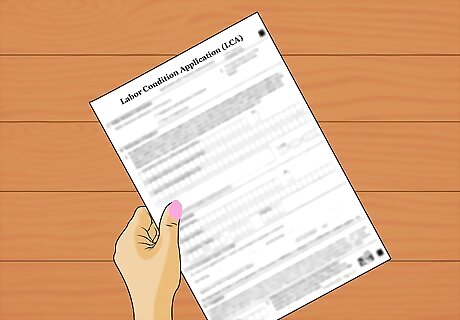
Ask your US employer to apply for the visa for you. Once you receive a job offer from a U.S. employer, your employer will apply for the H-1B visa on your behalf. The employer will be the legal petitioner and you, as the employee, will be the beneficiary. Your employer will file a Labor Condition Application (LCA) with the U.S. Department of Labor. The LCA determines how much you are going to be paid, based on the minimum salary or wage for Canadians working in the U.S. Once your employer receives a certified LCA, she will complete a Petition for Nonimmigrant Worker form to the United States Citizenship and Immigration Service (USCIS). Your employer will send in the completed petition, as well as the certified LCA and any necessary fees and documents to the USCIS for processing.
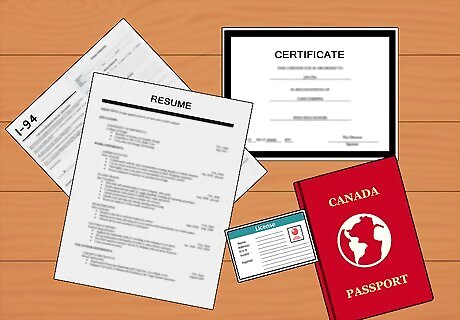
Supply the necessary documents for the application. You will need to provide official documentation to your U.S. employer to process the application. Your employer will also need to provide detailed information about your position at the company in the application. The necessary documents you will need to provide include: Sponsorship/job offer from the employer Copy of your current resume Copy of your Canadian passport Copies of your degrees, certificates, transcripts (if applicable) Employment reference letters from previous employers (if applicable) Copy of any professional development course certificates (if applicable) Professional license (if applicable) If you already live in the U.S., you can provide the following documentation: Copy of your US social security number, if you have one Copy of the front and back of the I-94 card Copies of any prior H1B approval notices of J1 forms If you are changing employers and are currently on H1B status, or are applying for an extension of stay with the same employer, provide a copy of your most recent pay stubs or a letter from your current employer verifying your employment.
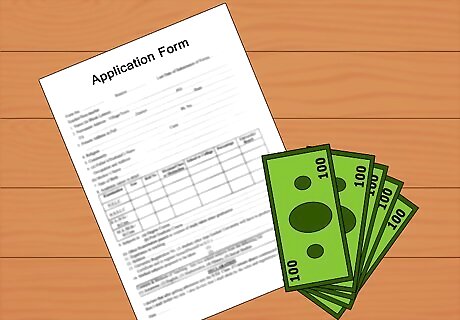
Discuss the payment of the application fee with your employer. Most U.S. employers will pay the application fee and the fee for the visa. However, you should discuss the payment of the fees before you complete the application.
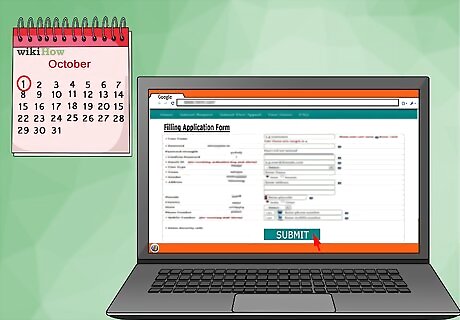
File the application by April 1st of the year you would like to work in the U.S. It usually takes two months for the application process to go through. So to ensure you are set to work in the U.S. for the fiscal year, your employer should file the application by April 1st. The earliest start date for an employee with an H-1B visa is October 1st of that fiscal year, or six months from the start of the fiscal year. If you would like to start working for your employer before October 1st, you should talk to your employer about applying for other visas, like the TN1, to fill the time gap.
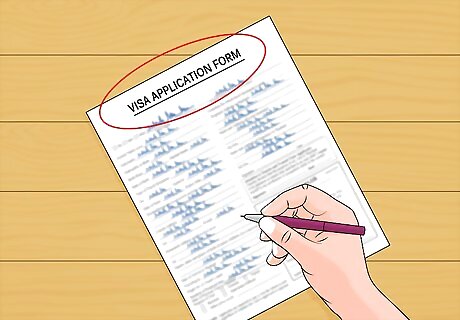
Re apply for the visa after one year working in the U.S. The H-1B visa is valid for up to three years, and can be renewed for another three years. You must leave after six years in the United States for one year but after one year you can re-apply for a new H-1B. This visa is also unique in that it allows for “dual intent”, which means you can apply for permanent residency status while on the visa. Other work visas, like TN1, do not permit dual intent. If you apply for an employment based green card while you have a H-1B visa, you can extend the visa indefinitely.
Getting a TN1 Visa
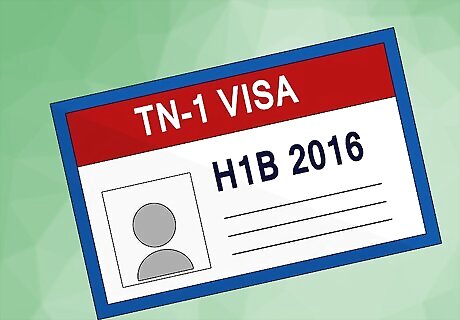
Qualify for a TN1 visa. The TN1 visa is modeled after the H1B visa, so it can only be used when your employer is based in the US. Though the application process is simplified with the TN1 visa, you must work in a specified profession that qualifies you for a TN1 visa. Accountants, architects, graphic designers, urban planners, medical professionals, and scientific professionals with bachelor degrees or higher education are all considered valid professions for this visa. A list of professions covered by NAFTA can be found here. The TN1 is only granted to employers, and if you need a visa for more than one employer, you will need to file multiple visa applications. If you are self-employed, you will not qualify for this visa category.
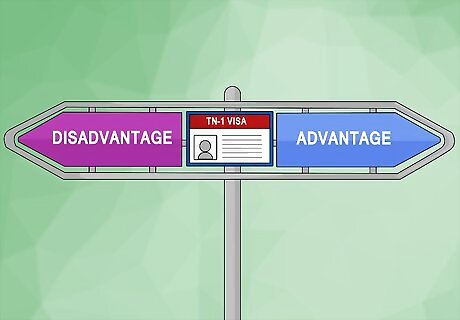
Understand the advantages and disadvantages of the TN1 visa. TN1 visas are valid for three years and are often more likely to be approved than an H-1B visa. The application period for a TN1 visa can also be fast tracked by applying for the visa at the US border. But TN1 visas also have several potential disadvantages, including: This visa is given to individuals with specialized skills and you may not qualify for the visa because your profession is not recognized by NAFTA as “specialized”. Under this visa, you must demonstrate your intention to return to Canada once the TN1 visa expires. For your first TN1 visa, you likely do not have to demonstrate your intention to return when you reapply. But if you have been on the TN1 visa for six to nine years, and are seeking another three year visa, you may be required to show you still intend to return to Canada at some point. You will need to provide documents showing you still maintain ties to Canada, such as bank account statements, a provincial driver’s license, real estate ownership, or having a spouse or other family living in Canada. With a TN1 visa, it is also more difficult to apply for an employment-based green card. There is no “dual intent” allowed with this visa and you must always demonstrate an “intent to return”. If you apply for a U.S. green card while you have a TN1 visa, this could be seen as a violation of your visa agreement and you may lose your visa.
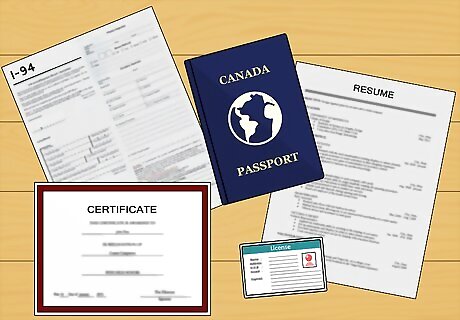
Apply for the visa in person at the border for a lower fee and faster processing. The application fee at the border is significantly lower than applying through the USCIS, and the decision to grant or deny the visa is made on the spot at the border. If you are denied the visa, you will learn the reason for the denial right away and attempt to correct it as soon as possible. You will need to carry the following documents with you to the U.S. border to apply for the TN1 visa: A description of your position with a US employer. It should include a description of why it is a professional occupation, recognized by NAFTA, and that the position is temporary. It should also confirm you are a direct employee and note your salary level. Proof of your qualifications, such as a copy of your degree, certificate, or transcripts A copy of your current resume A copy of your Canadian passport A copy of your social security number, if applicable A copy of your employment contract Details of your foreign address or place of residence
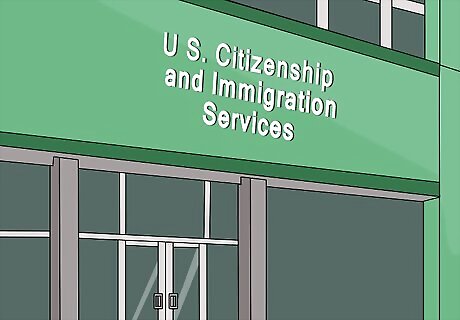
Discuss applying for the TN1 visa through USCIS with your employer. A TN1 visa application done through the USCIS will take at least two months to process, the fee is much higher and if you are denied, it will take more time and money to re apply via the USCIS. Talk with your U.S. employer about applying for the visa at the border, rather than the USCIS. If your employer insists on applying for the visa through the USCIS, you will need to supply the following documentation: Sponsorship/job offer from the employer A copy of your current resume Copy of your Canadian passport Copies of your degrees, certificates, transcripts (if applicable) Employment reference letters from previous employers (if applicable) Copy of any professional development course certificates (if applicable) Professional license (if applicable) If you already live in the U.S., you can provide the following documentation: Copy of your US social security number, if you have one Copy of the front and back of the I-94 card
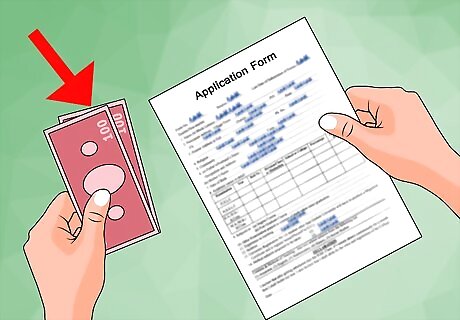
Ask your employer about the payment of the application fee. Most U.S. employers will pay the application fee and the fee for the visa. However, you should discuss the payment of the fees before you complete the application.
Getting a L1 Visa
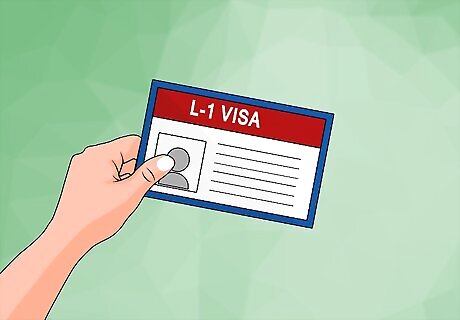
Qualify for the L1 visa. This visa is for intra company transfers. This is when a Canadian manager or executive who works at an affiliated Canadian office is transferred to one of the company’s U.S. offices. The employer must be conducting business in the U.S. and have an existing relationship with the Canadian company (affiliate, subsidiary, parent company, etc.). You must work at the affiliated company for at least one continuous year and be going to the U.S. to be a manager or executive to qualify for an L1 visa. You can also qualify for an L1 visa if you are going to the U.S. to set up an affiliate company. A Canadian company can send a manager or executive to establish a U.S. office. But the Canadian employer must demonstrate that there is a physical space for the new office, the employee has been a manager or executive for one continuous year, and the new U.S. office will support an executive or managerial position within one year of the L1 visa being issued.
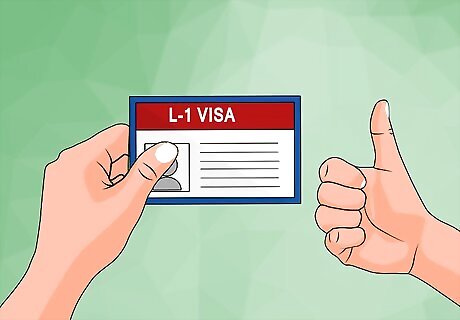
Understand the benefits of the L1 visa. An L1 visa is ideal for executive employees looking to establish a U.S. office of a Canadian company without having to go through a lengthy application process. As well, the spouses and unmarried children under 21 years old of L1 visa holders can come to the U.S. for the duration of the employee’s stay. Once you have an L1 visa, your spouse can also work legally in the U.S. Keep in mind you can re apply for the L1 visa after one year for a maximum of seven years. After seven years in the U.S., you are not eligible to apply for another L1 visa.
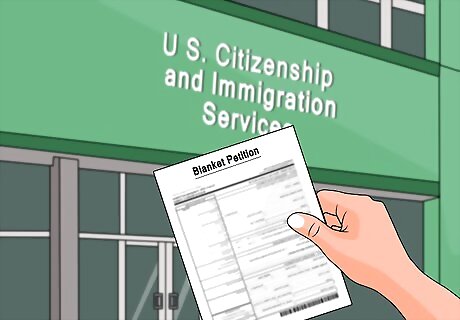
Complete a blanket petition. Your organization may establish an intracompany relationship between a U.S. office and a Canadian office by filing a blanket petition with the USCIS. You are eligible for a blanket petition if: The petitioner and the qualifying organization are involved in commercial trade or services. The petitioner has an office in the U.S. that has been conducting business for at least one year. The petitioner has three or more domestic and foreign subsidiaries, affiliates, or branches. The petitioner and the organization has obtained at least 10 L-1 approvals in the previous 12 months, has U.S. subsidiaries or affiliates with sales of at least $25 million, or has a workforce in the U.S. of at least 1,000 employees.
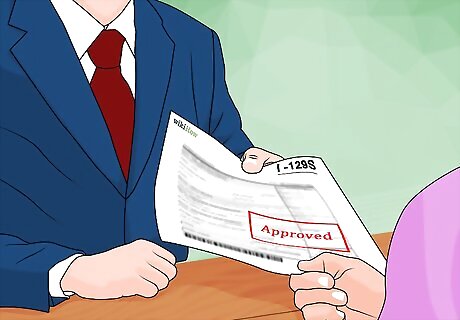
Get your employer to complete Form I-129S. This form can be found here. Your employer should then send you the completed form, along with a copy of the approved blanket petition. You will then present these documents to the consular office to complete the L1 visa application. You can also present your L1 visa application at the U.S. border to a U.S. Customs and Border Protection Officer for approval.
Getting a Temporary Work Visa
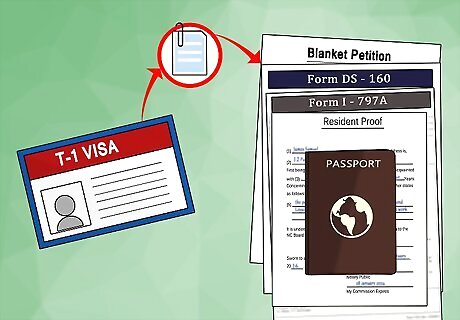
Complete the application process if you are a Canadian athlete participating in a specific event in the U.S. If you are going to be in the United States for an extended period of time as an athlete at a specific sporting event, you can apply for a temporary work visa (P1 visa). You will need to provide the following documents to the Canadian Embassy: A printed copy of the DS-160 Confirmation Page with legible bar code A valid passport (at least 6 months) Older passports containing any previous visas Documents proving your previous legal status in the U.S. Reciprocity fee (if applicable) Original or copy of Notice of Approval (Form I-797A or I-797B) Letter from the U.S. employer explaining the work you are doing, the amount of time you are spending in the U.S. and your salary/wage Copy of Petition for a Nonimmigrant Worker (Form I-129, found here), as completed by employer and filed with D.H.S. Evidence of qualifications (original or certified copy) Proof of ties or a residence in a country outside the U.S.
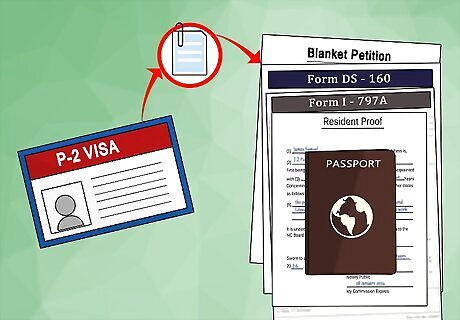
Follow the application process if you are on an artist exchange or are considered a culturally unique artist. If you are staying in the United States as a paid artist by a U.S. organization, you can apply for a temporary work visa (P2 visa, P3 visa) by submitting these documents to the Canadian Embassy. A printed copy of the DS-160 Confirmation Page with legible bar code A valid passport (at least 6 months) Older passports containing any previous visas Documents proving previous legal status in U.S. Reciprocity fee (if applicable) Original or copy of Notice of Approval (Form I-797A or I-797B) Letter from the U.S. employer explaining the work you are doing, the amount of time you are spending in the U.S. and your salary/wage Copy of Petition for a Nonimmigrant Worker (Form I-129, found here), as completed by employer and filed with D.H.S. Evidence of qualifications (original or certified copy) Proof of ties or a residence in a country outside the U.S.
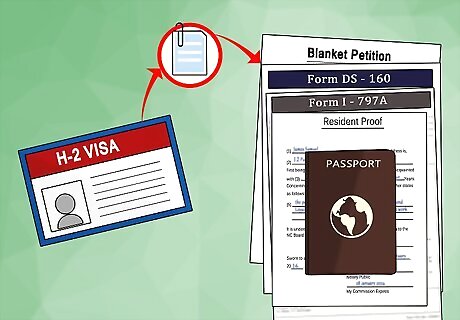
Complete the application if you are a temporary worker in nursing or agriculture. Nurses who are Canadian citizens and are working in the United States for a U.S. organization or client who is a U.S. citizen can apply for an H1A visa. Canadian agricultural workers who have a job offer from a company based in the U.S. can apply for the H2 visa. The required documents for both visas are: A printed copy of the DS-160 Confirmation Page with legible bar code A valid passport (at least 6 months) Older passports containing any previous visas Documents substantiating previous legal status in U.S. Reciprocity fee (if applicable) Original or copy of Notice of Approval (Form I-797A or I-797B) Letter from the U.S. employer explaining the work you are doing, the amount of time you are spending in the U.S. and your salary/wage, as well as a recent paystub or payslip Copy of the Petition for a Nonimmigrant Worker (Form I-129, found here), as completed by your employer and filed with D.H.S. A copy of your approved Labor Condition Application (LCA) Evidence of qualifications (original or certified copy). The Canadian Embassy may refuse to issue you a H-1B visa if your education and work experience are only based in a country other than the United States or Canada. If you do not have U.S. or Canadian work or education experience, you should apply for the visa from your country of residence.
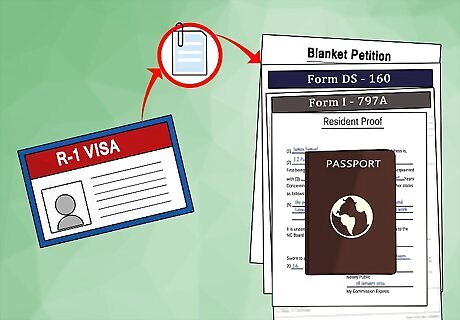
Apply for a temporary work visa if you are in a religious occupation. If you are a non-U.S. citizen who is going to work in the United States in a religious occupation or role, you can apply for the R1 visa. You will need to provide the following documents to the Canadian Embassy: A printed copy of the DS-160 Confirmation Page with legible bar code A valid passport (at least 6 months) Older passports containing any previous visas Documents substantiating previous legal status in U.S. Reciprocity fee (if applicable) Physical proof of membership in the religious organization Physical proof of the organization’s tax exempt status An official letter from the organization explaining your employment and the duration of your stay in the U.S. You must demonstrate you have work experience in your home country with the same religious organization you are going to represent in the U.S. Copy of the Petition for a Nonimmigrant Worker (Form I-129, found here), as completed by your employer and filed with D.H.S. Original or copy of Notice of Approval (Form I-797A or I-797B) Keep in mind the Canadian Embassy may refuse to issue you a H-1B visa if your education and work experience are only based in a country other than the United States or Canada. If you do not have U.S. or Canadian work or education experience, you should apply for the visa from your country of residence.











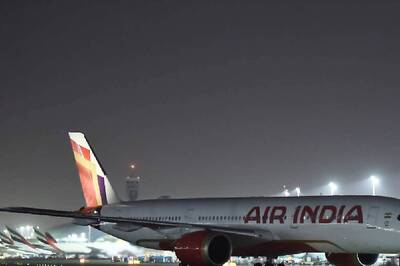





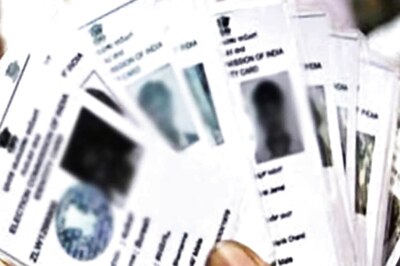


Comments
0 comment